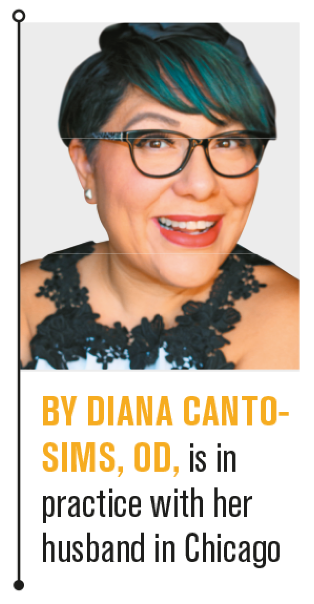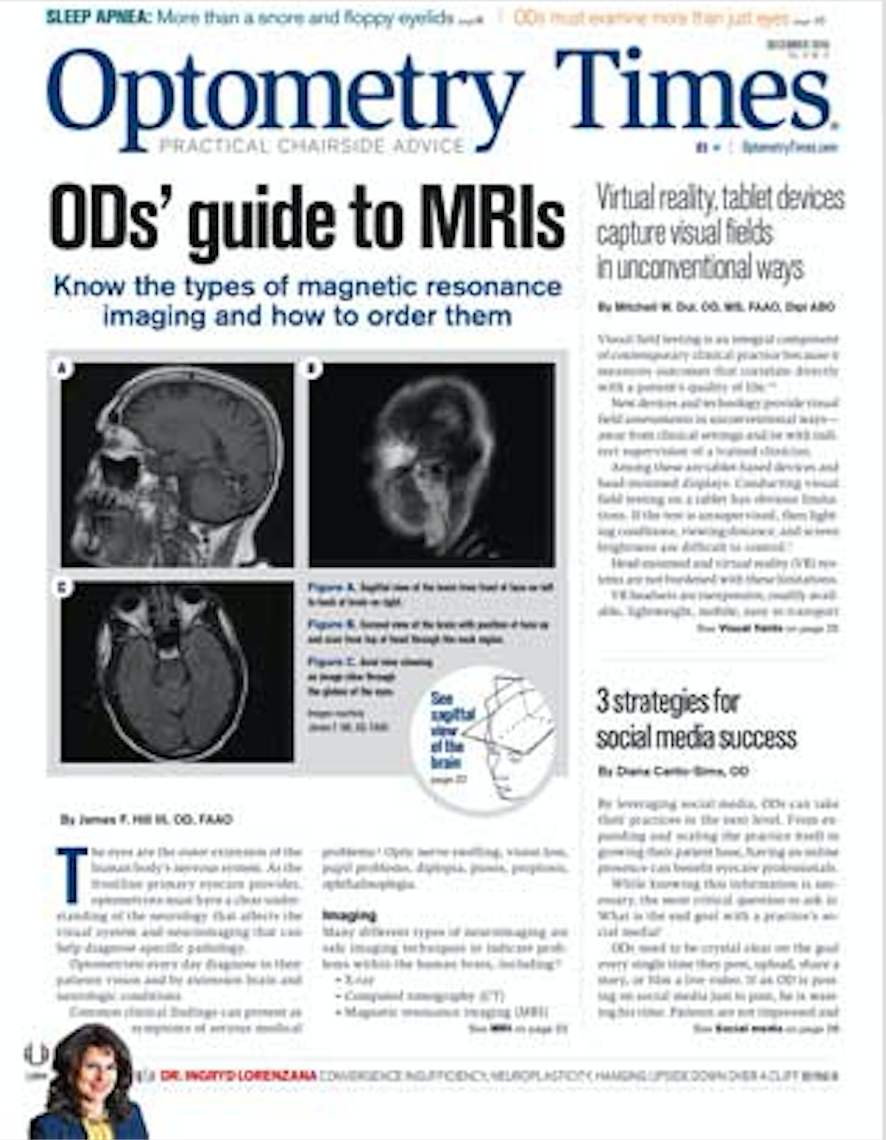3 strategies for social media success


By leveraging social media, ODs can take their practices to the next level. From expanding and scaling the practice itself to growing their patient base, having an online presence can benefit eyecare professionals.
While knowing this information is necessary, the most critical question to ask is: What is the end goal with a practice's social media? â¯
ODs need to be crystal clear on the goal every single time they post, upload, share a story, or film a live video. If an OD is posting on social media just to post, he is wasting his time. Patients are not impressed and won’t be engaged.
Here are three tips to follow for success before hitting that publish button.
1. Establish the ideal patient
If an OD is talking to everyone, he is speaking to no one. Make sure value is being provided to ideal patients in every post in an authentic manner. If patients don’t think you are speaking directly to them, they will tune out or-in social media terms-keep scrolling.
Related: Using social media to improve the way you connect
Here is an example of a generic post that speaks to everyone and engages no one:
"Make an appointment for an eye exam at XYZ Optical. We have many frame styles to match your lifestyle."
Compare that to:
"Are you tired of not finding eyewear that fits right? Or frames that constantly slide down your nose? Call us today to make an appointment with one of our stylist opticians for a discovery style session to find the perfect eyewear for you!"
The first post is broad and speaks to no one specific, while the other post is written for a specific category of patients.
2. Create a CTA in every post
Posting just to post is a wasted effort. What should a potential patient do? Call to make an appointment? Click to book an appointment online? Go to your website? Let the patient know the next step.
I have seen and read great posts until the end and thought, “Well that was insightful, now what?” and I go on to the next post. A call to action (CTA) is imperative to tell potential patients the next step to take.
â¯
For example: "Experts say that roughly 80 percent of what a child learns in school is processed visually. Good vision is vital to reach full academic potential. Has your child had his or her eye exam this school year? Call us today to make an appointment: <insert your practice phone number>.
The CTA is, "Call us today to make an appointment."
3. Check analytics for every post
If an OD has a business page or account on social media, he has the opportunity to go behind the scenes and identify how well his posts or videos performed.
This data is called insights or analytics. Know what works and what doesn't. Do more of what works and stop doing what doesn't. These tools are also great for finding ideal followers. With such data, ODs can speak to the audience that is already engaging on their social media.â¯
Value of social media
Experts have said that social media is here to stay. The numbers may fluctuate, with surveys showing that Facebook is losing traction, but other platforms like Instagram and Snapchat are rising to take its place in popularity.1
Gary Vaynerchuk, CEO and founder of VaynerMedia, says: “Your phone is the new television. Social media is like channels on your TV. You may have favorite channels like CNN, PBS, ESPN, and you frequently go back and forth on these channels to satisfy your need for information or entertainment. Social media is the same thing.”2
Related: 3 strategies to grow your practice
Some people prefer Facebook, and some people favor Instagram. Some go back and forth between the two. Some chime into Pinterest for inspiration once a month or when they buy a new home.
To be successful in social media, an OD needs to focus on which platforms his ideal patients are using so he can post and reach them effectively.â¯
An OD cannot be all things to all people. And although he should have a presence across all social media platforms, the OD should concentrate on only one or two. Preferably the platform the ideal patient frequents.
Engagement
Another way to know if social media is effective is by asking new patients how they knew about a specific OD or practice. â¯
Many patients have said they found out about our practice through a tweet of a family member or a "check in" on Facebook from a friend.
Remember, engagement is key. This can include posting on social media and people commenting, liking, tagging friends, and sharing posts. No matter which form of social media the practices uses, make sure that every post invites engagement.
A common thread of success in social media is the engagement received with each post.â¯
Facebook shows posts more frequently when people engage. Otherwise, it costs to boost posts for more people to see it.
ODs shouldn’t assume that just because they are posting article relevant to their industry, they are going to have success on social media. Without engagement, a post will be buried among all other unengaged posts.
Finding success
The best way to create success is by establishing an end goal. If the CTA is to book appointments, then track the clicks to make an appointment, clicks to the practice’s website, or calls to the office. â¯
Likes and followers are excellent overall. Engagement, however, is more important. If an OD wants to grow a practice’s social media presence organically and not pay to boost posts or for ads, then he should monitor the engagement his posts create.
ODs need to allow their expertise to shine on social media to grow their practice. Example: If you are an expert in dry eye treatment, post about your expertise and how you can help with a CTA.
Additionally, remember to display the current logos of social media platforms on which you are active. These logos should also be incorporated in all literature, business cards, and signage around the office.
Read more from Diana Canto-Sims, OD
References:
1. Smith A, Anderson M. Social media use in 2018. Pew Research Center. Available at: http://www.pewinternet.org/2018/03/01/social-media-use-in-2018/. Accessed 11/2/18.
2. Inbound. Inbound 2016: Gary Vaynerchuk keynote “Do this and succeed. “Available at: https://www.inbound.com/content/gary-vaynerchuk-keynote. Accessed 11/2/18.

Newsletter
Want more insights like this? Subscribe to Optometry Times and get clinical pearls and practice tips delivered straight to your inbox.
2 Commerce Drive
Cranbury, NJ 08512
All rights reserved.